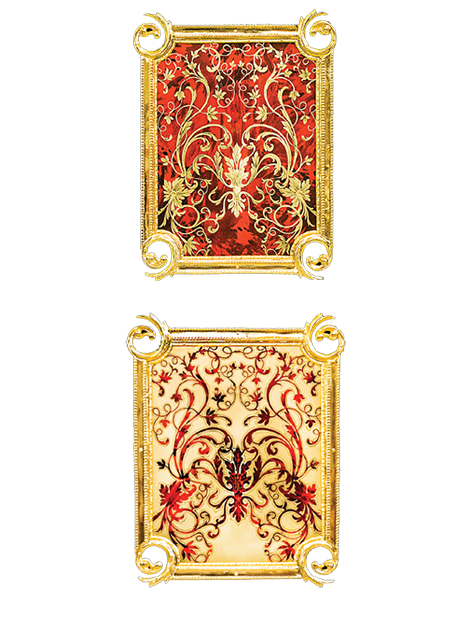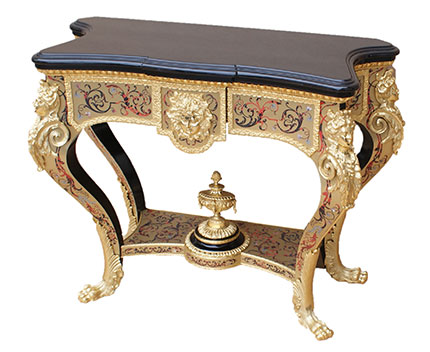"Boulle" style inlay
André-Charles Boulle is so closely identified with brass and tortoiseshell inlay that this type of inlay, as used in French antique furniture, bears his name. However, he was not the inventor of this process. In seventeenth century Italy and France, furniture was sometimes inlaid with tin, and sometimes with brass and tin. Boulle will favor brass and tortoiseshell.
In the decorative parts of his work, he achieved perfection through his extraordinary precision. His most original discovery was cutting a copper sheet and a piece of blonde tortoisehell together, according to the design chosen. This technique, still in use today, produces two panels which are at once similar and different. In the first, known as the premiere partie, the brass design fits into the tortoiseshell background; in the second, the contre partie, the tortoiseshell is inserted into a brass background.
The inlay of French antique furniture in Boulle style features elongated and multiplied tendrils and stylized leaves, which are the result of rigorous design, precision, finesse and astonishing regularity. This is also achieved on the contre partie copper surfaces, cut in the same designs.
The abundance of bronze and its widespread use is another of Boulle's innovations. The bronze, which he manufactured himself, has a dual purpose: it protects the corners and most vulnerable parts of the furniture, as well as serving as hinges or feet and as decorative elements such as panel frames, masks, claws, friezes, foliage and even bas-reliefs representing allegorical and mythological characters or scenes.
Boulle-style decoration of French antique furniture is complemented by bronze furnishings he designed and manufactured himself: clocks, folders, candlesticks, chandeliers, and inkwells, all testimony to a well-rounded artist.

